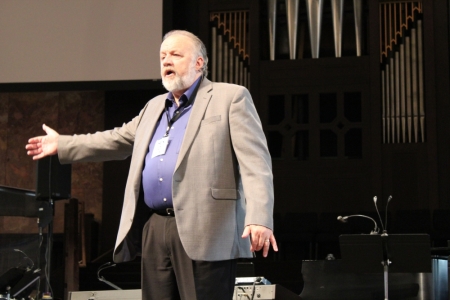Gary Habermas on 6 Skeptics-Approved Facts That Prove Jesus' Resurrection

Speaking at the Southern Evangelical Seminary's annual National Conference on Christian Apologetics, Christian philosopher and historian Gary Habermas shared historical facts that a vast majority of scholars, including even skeptics, do not dispute — facts that are the basis for proving Jesus' boldly resurrection.
"Of what did earliest preaching consist before there was a single New Testament book? What did the earliest Christian preaching look like before any books were written?" Habermas, a New Testament scholar, asked the audience, explaining that he would talk about what the first 20 years after Jesus' Crucifixion looked like.
Oral testimonies are important as evidence of a historical event, he said Saturday at what's known as America's largest and longest-running apologetics conference. He added that studies have shown that if you have special reasons to remember special events, you'll remember it more carefully for a longer period of time.
Habermas, the distinguished research professor and chair of the Department of Philosophy and Theology at Liberty University, said there are some historical facts that even critics "allow," referring to the minimal facts theory. "Two arguments for what makes a minimal fact include only those historical data that are strongly evidenced by multiple independent lines of argumentation, and only those data which are accepted as historical by virtually all historical scholars," he explained.
The six strongest evidences to support the resurrection, which are not denied even by critics, are ones about which no scholar has debated him, said Habermas, who has authored several books.
These include Jesus died by crucifixion; Jesus' disciples had real experiences that they thought were appearances of Jesus; the disciples were transformed even to the point of being willing to die for their message; James, the brother of Jesus, had real experience wherein he thought he had an appearance of Jesus; Paul also had a similar appearance of Jesus and converted; and the message was proclaimed within one or two years from the crucifixion.
Other facts which are also accepted by scholars, including skeptics though not with an overwhelming majority, include Christians' talk of the resurrection of Jesus appears to be of bodily in nature; Jesus was buried, the disciples despaired after the crucifixion thinking that all hope was lost; the tomb was empty; Sunday became the primary day of worship; and Jesus predicted His resurrection appearances ahead of time.
However, scholars say there's no way history can prove a miracle, he said, adding that "what they're not telling you is … history can show you events occurred," but only philosophy and theology can construct an argument that it could only have come from God's hand. "Historians don't have any test called a miracle test."
For example, some can say that Jesus' disciples having experiences that they thought were appearances of Jesus is a fact, but not necessarily actual resurrection, Habermas said.
To prove the resurrection, "naturalistic theories need to fail," he went on to say, adding that "naturalistic alternatives need to be destroyed." But Jesus having predicted His resurrection is a "divine action pattern" all by itself, he argued. This matters all the more considering who Jesus is, as He remains unmatched among all key figures in all religions, the apologist said.
All the major five naturalistic theories on the resurrection were reported in the Gospels, and three of those five were reported by Christians, Habermas stressed. "Don't think Christians don't ask hard questions."
Habermas sought to show how even skeptical approaches can help establish the resurrection historically.






















